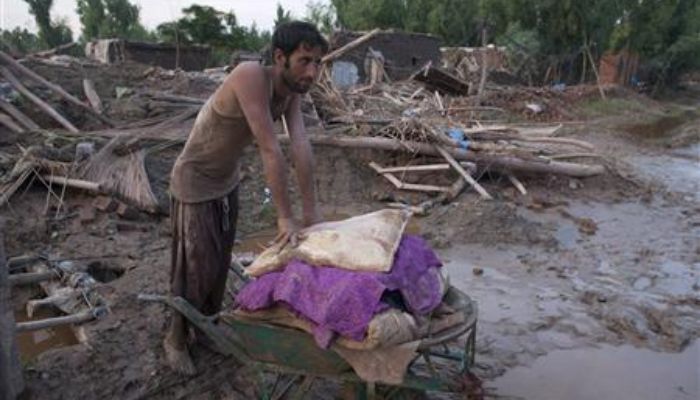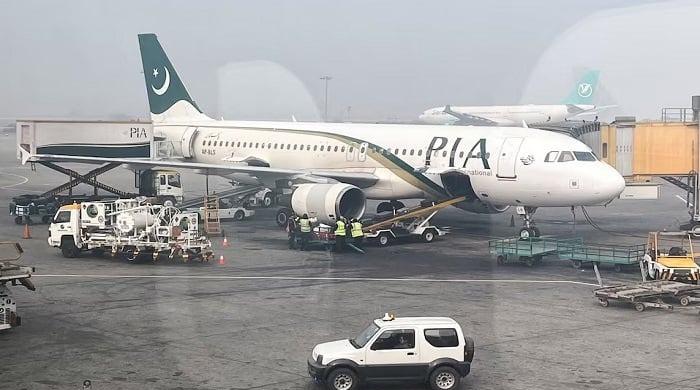What Pakistan could have learned from 2010 floods
Contingency plans for all disasters – flood, earthquake, cyclone, landslide, industrial and nuclear – must be prepared by NDMA in consultation with key stakeholders, and regularly reviewed and...
August 29, 2022

Successive governments haven’t learnt any lessons despite the 2010 recommendations by the NDMA following the devastating floods. Failure to develop a robust systemic response, the country is facing another mega disaster now where around 1,033 people have lost their lives during the recent floods in various districts.
Figures collected from various sources revealed that during the last 24 hours, the total reported deaths were around 119 while the total population so far affected by the devastating floods was 5,773,063.
The figures further revealed that so far a total of 1,033 people have lost their lives, the total injured was 1,527, the total people rescued were 51,275, the total houses damaged were 949,858, total animals killed were 719,558 and people staying in relief camps were 498,442 since mid-June when the monsoon floods began to wreak havoc.
After the floods of 2010, the NDMA came out with a detailed report titled “Pakistan 2010 Flood Relief–Learning from Experience, Observations and Opportunities and the Lessons Learned” but unfortunately the ‘lessons learnt were not applied even after 12 years.
The 2010 flood report suggested that the disaster management capacity of the state needed immediate focus as it was limited at multiple levels of government. At the federal level, NDMA suffered from a significant paucity of resources in comparison to the monumental caseload. It has not legislated authority to control the activities of any other agency such as a PDMA or a DDMA yet public perception deemed it to be responsible for everything from planning to implementation. At the provincial level, there was a distinct lack of capacity for the provision of relief, with the exception of Khyber Pakhtunkhwa which had a recent experience with humanitarian catastrophes.
In the other two badly hit provinces, Punjab and Sindh, there were few people in the government or PDMAs with enough experience in disaster operations, management or organization. Though the capacity was strengthened over time following the disaster, the present crisis has exposed many systemic flaws.
Capacity was an issue not only for NDMA but also for most stakeholders including UN agencies, INGOs and national NGOs. The short-term deployment, sometimes for as little as two or three weeks, of UN and INGO personnel to Pakistan from other emergencies was identified by stakeholders as a problem area, as they had little time to understand the ground realities before leaving again. Creating sufficient surge capacity both nationally and internationally as an area to be addressed for future emergencies. Management and capacity issues presented a serious challenge in Punjab and Sindh, the previous report revealed, which once again continue to haunt now.
The previous report also suggested that several government ministries and departments were requested to send on secondment at least one person to NDMA to assist with issues particularly relevant to their home agency’s role in the flood response. Regrettably, except for the armed forces, the other ministries did not assist. It said coordination was one of the most challenging and complex aspects of the relief phase, whether between centre-province, government-UN, inter-agency or within the overall humanitarian community in general. The lack of coordination was seen between the federal-provincial governments and between the government departments, organizations and INGOs and NGOs.
The 2010 report suggested the launching of the Pakistan Floods Relief and Early Recovery Response Plan (PFRERRP) but in practice no such system existed through which, the residents of the flood-prone areas were informed before the time of the imminent danger. The government must take the lead in setting the priorities and policy guidelines, the report further suggested and pointed out that mushrooming of INGOs should be controlled. It is an obvious fact that parallel decision-making bodies create confusion about mandates and the relief operations should be carried out as a “One Window”.
The cooperation, collaboration or complementarities of civil and military stakeholders in an emergency is integral to a successful response. However, there was a lack of clarity on some issues regarding sharing of information between the military and humanitarian community that needs to be resolved in future disasters to avoid overlapping and duplication in the distribution of relief goods. This happened again in the present floods, which shows that no step was taken to improve coordination.
The previous report also highlighted that one of the prominent features of the response was the cash transfer mechanism for compensation and it was suggested that this could be done through the Watan card. However, no such card was introduced in the present situation. The previous report also criticized the role of media that was focused on criticizing the government and raising allegations of corruption, which detracted from the impetus to contribute to the relief efforts by the public and donors. Presently, the media was actively involved in covering the ongoing political situation in the country and that was why the flood situation was not reported in the media as it should be.
It had recommended developing a set of guidelines to provide a clear definition of roles and responsibilities of all stakeholders including ministries/departments, military, donors, UN agencies, humanitarian organizations, philanthropists and civil defence. In case of disaster response the capacity development of the PDMA’s of Punjab, Sindh and Balochistan in terms of increased resource allocation, personnel training, warehousing and focal-point functionality, the previous report said and also suggested that a Joint Aviation Coordination Cell must be established immediately.
An incident command system, as envisaged in the NDM Act 2010, needs to be operationalised for future disasters and NDMA should ultimately have a dedicated air rescue team at its disposal to facilitate immediate response and rescue in the event of any disaster, the report said. However, no joint aviation coordination cell was seen actively rescuing people stuck in the flood and no NDMA air rescue team was seen working also.
For infrastructure restoration and re-construction, the 2010 floods must be used as the benchmark and there should be permanent threat-specific warehousing of required relief goods while warehouses should be established in different regions. This important suggestion of the previous report was also missing and NDMA has to rely on either the military resources or on the resources of district administrations, which in most cases hired private vehicles and equipment for rescue operations.
Contingency plans for all disasters – flood, earthquake, cyclones, landslides, industrial and nuclear – must be prepared by NDMA in consultation with key stakeholders, and regularly reviewed and updated. It also recommended mock exercises to be conducted by NDMA regularly for all types of disasters with the stakeholders, the report said but we have not seen any mock exercises done by NDMA to deal with any type of disaster.
As per the 2010 report, disaster risk reduction was a future investment and donors must be encouraged to fund relevant programmes such as enhancing the capacity of districts to deal with a disaster, multi-hazard risk assessment of major human settlements and economic centres, technical studies on climate change associated hazards and preparation/updating of district and provincial disaster management plans. But unfortunately, we didn’t learn any lesson from the past and ultimately the flood victims have suffered more this time around.
Originally published in The News









